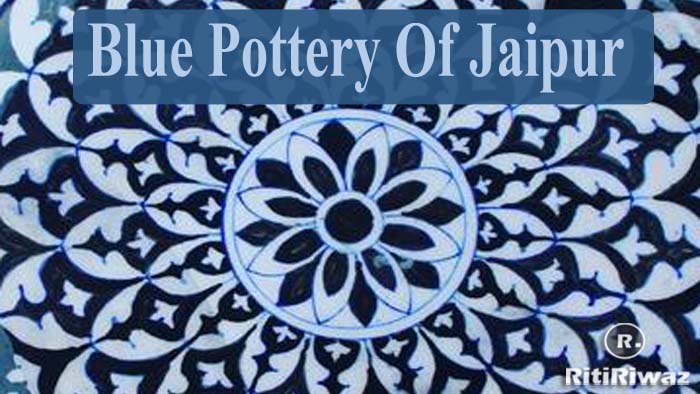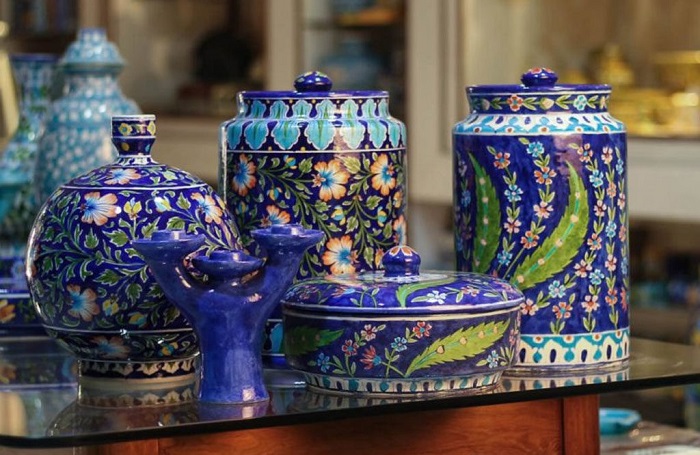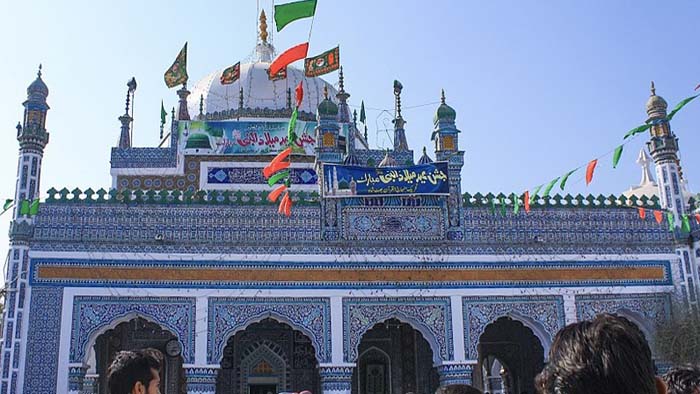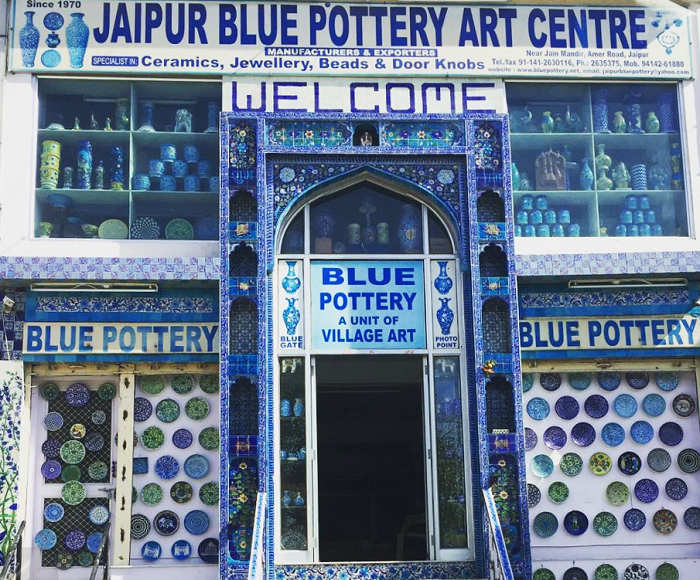Blue Pottery Of Jaipur Facts And History

Jaipur, Rajasthan is one of the most culturally rich cities in India with an exquisite history that brought around an era of skilled craftsmen and artisans. One of such crafts and craftsmen was the potters skilled in the art of Blue pottery, a form of pottery that is extremely lavish, and extravagant.
The Art of blue pottery came to Jaipur from Persia and Afghanistan via Mughal Courts. The dough to form the pottery is made by mixing 6 ingredients quartz stone powder, powdered glass, Katira Gond powder, Multani Mitti, and Saaji, and water. The blue color or greenish-blue color is obtained by the combination of crude copper oxide with salt or sugar in a furnace and then filtering it for use and the dark ultramarine color is obtained from cobalt oxide.
Creating the right blend by mixing quartz stone powder, powdered glass, Multani Mitti (Fuller’s Earth), borax, gum, and water is at the core of Jaipur Blue Pottery. The pottery is completely different from the regular ceramics which use the clay from the river bed, which results in its uniqueness and exclusivity.

Blue Pottery of Jaipur is very famous all over the country and even in the world. The artwork is called Blue Pottery because the clay colors are in blue which is done with shades of blue. These are paired with gold and silver designs and the style of art is actually derived from the Turko-Persian style. The blue color used to paint the sculptures is actually a color that is created by Egyptian technology such as Multani clay, Katira Gond, common gum, sodium bicarbonate, and water.
The blue pottery of Jaipur is easily recognizable in any local market and is beautifully designed which is done in blue and golden colors. These vessels mostly have designs of birds and animals such as horses and camels. You can buy ashtrays, jars, cups, tea sets, small bowls, crockery, and many other utensils.
The history behind Blue Pottery

Apart from Turkey, the form was developed by Mongol artists in the 14th century and then transferred to the Chinese who were inspired by the Persians’ construction and artworks on mosques, palaces, and tombs in various parts of Central Asia. When it came to India with the Mughals, they started using it in various architectures, and later it was introduced in Delhi and transferred to Jaipur artisans in the 17th century.
The craft became popular and became the special art of Jaipur from the early 19th-century era under the reign of Sawai Ram Singh. Various antique and long ago ceramic blue pottery works can be seen in the museum of Rambagh Palace.
It was then revived by the conscious efforts of some artists and the royalty of Jaipur that today Jaipur Blue Pottery is the famous world over for its delicate motifs, subtle color blends, and innovative product designs. Originally available only in the traditional cobalt blue now it has added turquoise blue, yellow, and soft green to its palette. Blue pottery has now become the common livelihood of the local artisans of Jaipur.
Craftsmen of Blue Pottery in Jaipur
According to the artisans, blue pottery is being used by 25 to 30 units in and around Jaipur. Ten to eleven units are from Kot Zafar of the village and the rest are from the main city of Jaipur. The former was more productive but since it is a time-consuming and tedious craft, producers have shifted to other methods of livelihood. The craft is mainly performed by the Kharwal, Kumbhar, Bahairwa, and Nat castes. Of these, Kharawal and Khambar are the major producers of blue pottery.

The shops where you can buy items of blue pottery are – Rajasthali and other shops on MI Road and Amber Road in Jaipur. The Kripal Kumb in Bani Park and Neerja International in C Scheme in Jaipur are also good places to purchase blue pottery.
Today, blue pottery is an industry that provides a livelihood to many people in Jaipur. The traditional designs have been adapted, and now, apart from the usual urns, jars, pots, and vases, you can find tea sets, cups and saucers, plates and glasses, jugs, ashtrays, and napkin rings.
